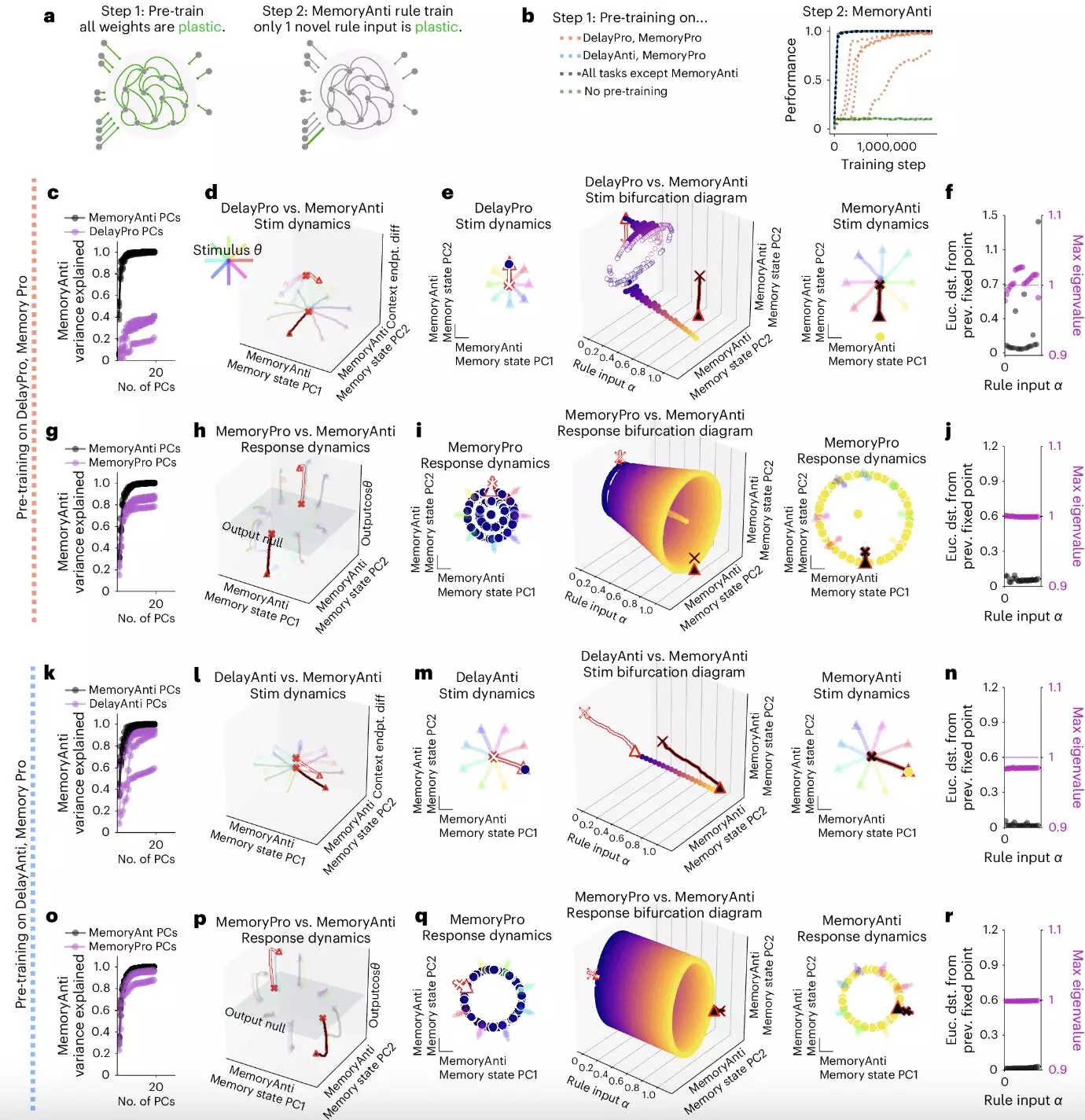Cognitive flexibility, the ability to rapidly switch between different thoughts and mental concepts, is a crucial aspect of human intelligence. This ability enables individuals to multitask, learn new skills quickly, and adapt to new situations. While artificial intelligence (AI) systems have made significant advancements, they still lack the same level of cognitive flexibility as humans. Understanding how biological neural circuits support cognitive flexibility can pave the way for developing more flexible AI systems.
Recent studies have focused on neural computations using artificial neural networks to mimic the functions of biological neural circuits. A research group from New York University, Columbia University, and Stanford University trained a single neural network to perform 20 related tasks. This study aimed to investigate how neural networks can perform modular computations to handle multiple tasks effectively.
The researchers identified a computational substrate within recurrently connected artificial neural networks that enable modular computations called “dynamical motifs.” These recurring patterns of neural activity implement specific computations through dynamics like attractors, decision boundaries, and rotations. The study showed that these dynamical motifs were reused across tasks, demonstrating the network’s ability to adapt and switch between different computations.
Further analyses revealed that in convolutional neural networks, dynamical motifs are implemented by clusters of units when the unit activation function is restricted to being positive. Lesions to these units were found to impair the network’s ability to perform modular computations. The researchers also noted that motifs could be reconfigured for fast transfer learning after an initial learning phase, highlighting their importance in compositional computation.
The study by Driscoll, Shenoy, and Sussillo provides valuable insights into how neural networks can effectively handle multiple tasks through the utilization of dynamical motifs. This research not only enhances our understanding of neural processes related to cognitive flexibility but also opens up new possibilities for improving AI systems. By incorporating these findings into neuroscience and computer science research, there is potential for developing more sophisticated artificial neural networks that can emulate the cognitive processes observed in biological systems.


Leave a Reply